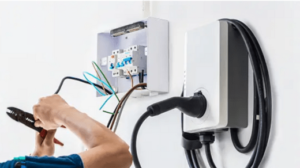how to attach fire brick to metal
Attaching fire brick to metal can be done using various methods, depending on your specific project and requirements. Fire bricks are often used in applications like fireplaces, wood-burning stoves, and metal forges. Here’s a general guide on how to attach fire brick to metal:
Materials and Tools Needed:
- Fire bricks
- Metal frame or structure
- Refractory cement or mortar (rated for high temperatures)
- Trowel or putty knife
- Safety equipment (gloves, eye protection, and a mask)
Steps:
- Prepare the Surface: Ensure that the metal surface you’ll be attaching the fire bricks to is clean, dry, and free of any debris, rust, or paint. Use a wire brush or sandpaper to remove any surface contaminants.
- Cut Fire Bricks (if necessary): Measure and mark the fire bricks for cutting, if needed, to fit the specific area of your metal structure. Use a masonry saw or angle grinder equipped with a masonry-cutting blade to cut the bricks to the desired size and shape.
- Prepare the Refractory Cement: Follow the manufacturer’s instructions for mixing the refractory cement or mortar. Typically, this involves mixing the dry powder with water to achieve the desired consistency. Wear safety equipment during this process.
- Apply a Thin Layer of Cement: Using a trowel or putty knife, apply a thin layer of refractory cement to the metal surface where you’ll place the fire bricks. This layer acts as a bonding agent for the bricks.
- Place the Fire Bricks: Carefully place the fire bricks onto the metal surface, pressing them firmly into the thin layer of refractory cement. Ensure they are aligned correctly and fit snugly without large gaps.
- Add More Cement and Fire Bricks: Apply a layer of refractory cement on top of the first layer of fire bricks. As you add more fire bricks, press them firmly into the cement, leaving minimal gaps between the bricks. Continue this process until you’ve covered the desired area.
- Fill Gaps and Joints: If there are gaps or joints between the fire bricks, use additional refractory cement to fill them. Smooth the surface for a clean and even appearance.
- Cure the Refractory Cement: Allow the refractory cement to cure according to the manufacturer’s instructions. This typically involves keeping the area at a moderate temperature and ensuring it stays dry during the curing process.
- Test the Installation: After the refractory cement has fully cured, test the installation by subjecting it to the high temperatures it will encounter during regular use. Ensure that the bond between the fire bricks and metal is strong and that there are no signs of cracking or separation.
Attaching fire bricks to metal using refractory cement creates a heat-resistant and durable bond suitable for high-temperature applications. It’s essential to use the right refractory cement for your project, as some types are specifically designed for certain temperature ranges and applications. Always follow the manufacturer’s instructions for both the refractory cement and fire brick installation to ensure a safe and effective result.








